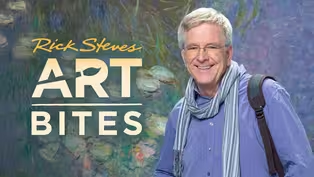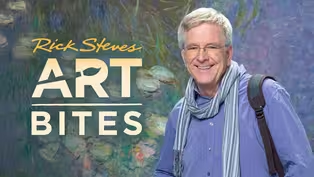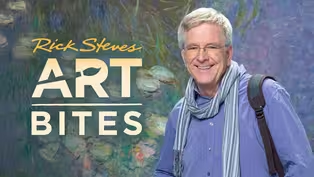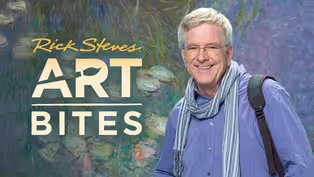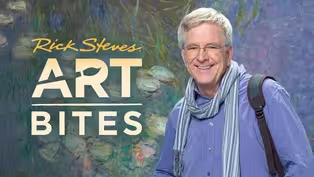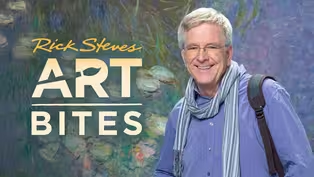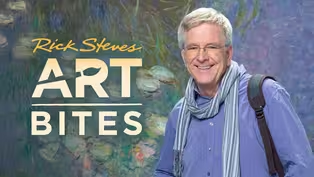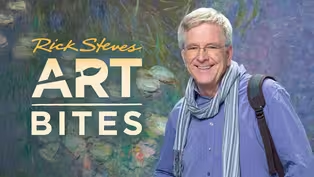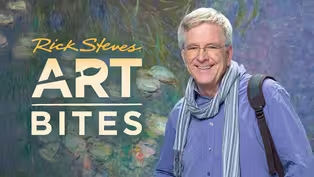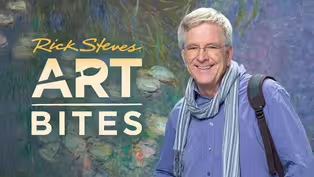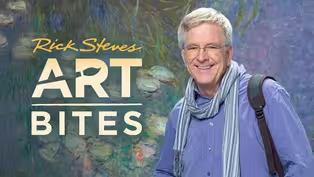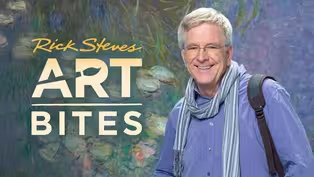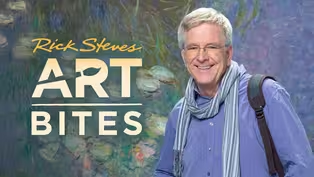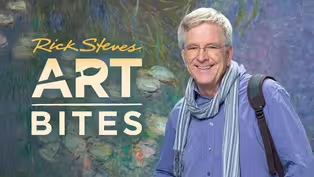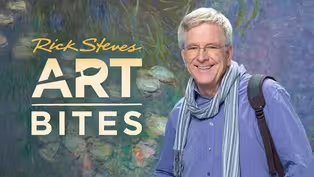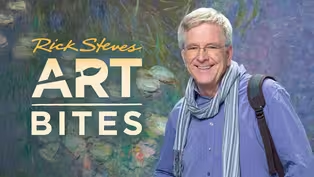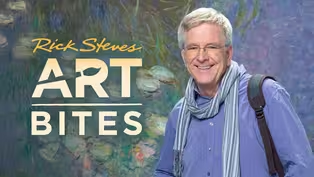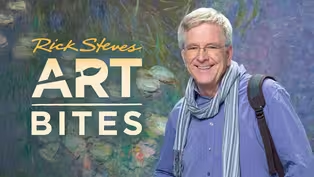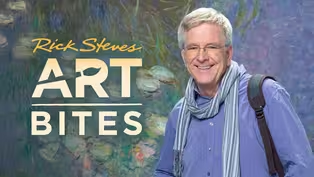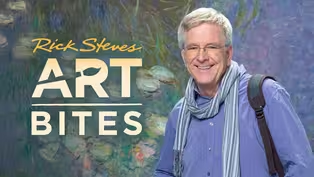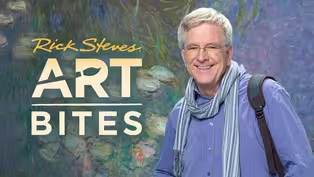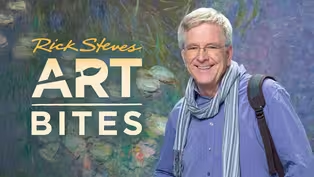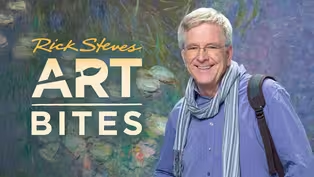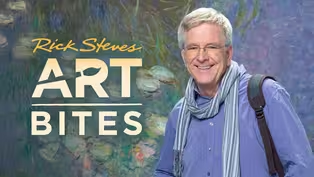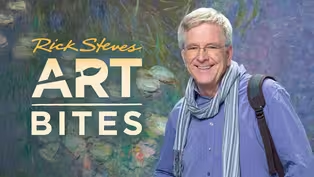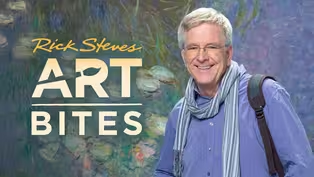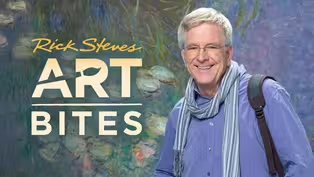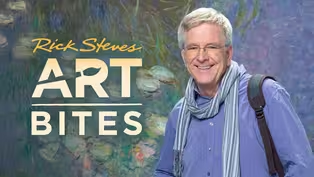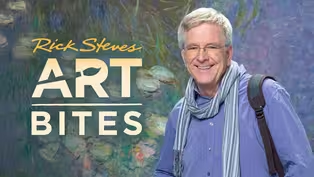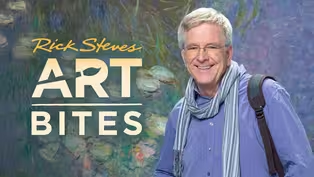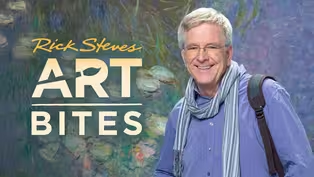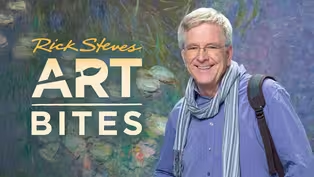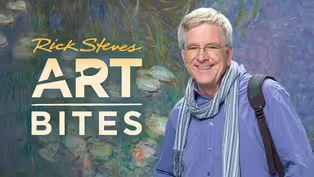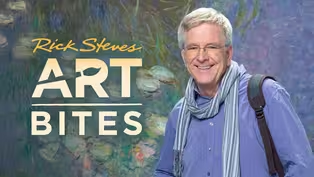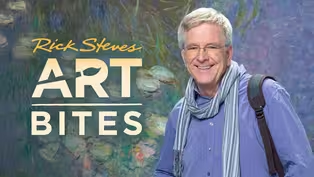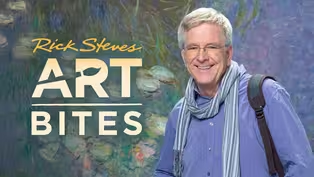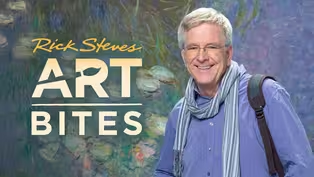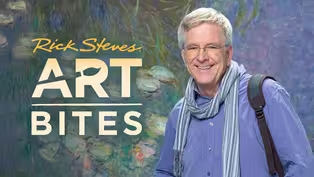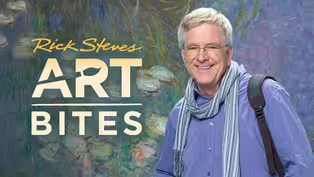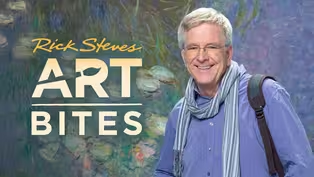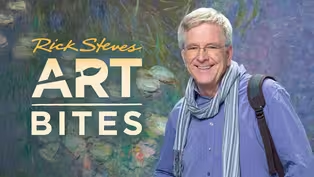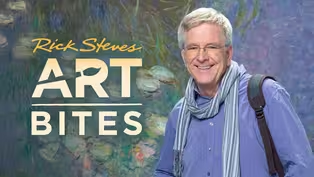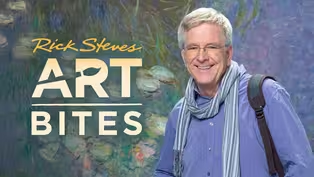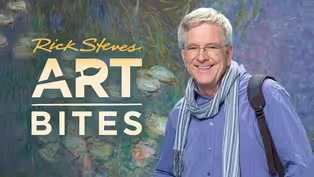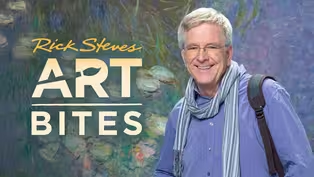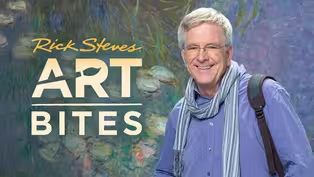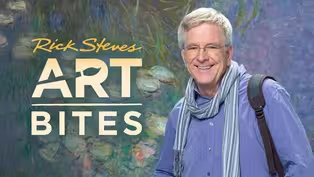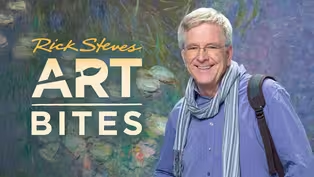Rick Steves' Europe
Art Bites 147: Gothic Church Architecture, the Pointed Arch and More Light
Clip | 6m 51sVideo has Closed Captions
The Gothic Age was famed for its towering churches filled with glorious stained-glass windows.
The Gothic Age was famed for its towering churches filled with colorful light shining through glorious stained glass and devout pilgrims. The revolutionary skeletal Gothic church design is best illustrated by building one with 13 travelers.
Problems playing video? | Closed Captioning Feedback
Problems playing video? | Closed Captioning Feedback
Distributed nationally by American Public Television
Rick Steves' Europe
Art Bites 147: Gothic Church Architecture, the Pointed Arch and More Light
Clip | 6m 51sVideo has Closed Captions
The Gothic Age was famed for its towering churches filled with colorful light shining through glorious stained glass and devout pilgrims. The revolutionary skeletal Gothic church design is best illustrated by building one with 13 travelers.
Problems playing video? | Closed Captioning Feedback
How to Watch Rick Steves' Europe
Rick Steves' Europe is available to stream on pbs.org and the free PBS App, available on iPhone, Apple TV, Android TV, Android smartphones, Amazon Fire TV, Amazon Fire Tablet, Roku, Samsung Smart TV, and Vizio.
Providing Support for PBS.org
Learn Moreabout PBS online sponsorshipBy the year 1000, Europe was on the rise: Entering a period called the High Middle Ages, it was a time of growing innovation, trade, and travel.
Christianity was dominant, and people celebrated their faith by building great structures.
The imposing Romanesque style was eventually eclipsed by an even grander style, Gothic.
Gothic was an architectural leap forward with taller and taller churches reaching for the heavens and filled with more and more light.
Fueled by their faith, Europeans built towering cathedrals to the glory of God.
Each community tried to outdo the other.
With churches featuring soaring naves supported by elaborate pointed arches and flooded with light, Gothic seemed to be emblematic of a Europe moving upward and onward.
The Gothic style was born in France in the 12th century.
The cathedral in Chartres, one of the first, greatest, and most influential Gothic churches, captures the spirit of this “Age of Faith” as the Middles Ages were nick-named.
Magnificent structures were built by the sweat of peasants, construction projects that dominated entire communities for generations█ all for the glory of God.
Towering churches like this became sights which, for centuries, broke distant horizons, heartening the weary spirits of approaching pilgrims.
Gothic churches were taller and brighter than the earlier Romanesque.
They were made with a skeleton of support.
The key to Gothic is the pointed arch.
A Romanesque church is built with round arches.
With a round arch, the weight pushes down.
But with a pointed arch, the weight pushes not down but out.
As a tour guide, it█s fun to demonstrate this by building a Gothic cathedral out of tourists: You start with six columns.
These will support the roof with ribs (ignore the elbows) coming together with pointed arches.
The key to Gothic is the pointed arch.
A Romanesque church is built with round arches.
With a round arch, the weight sits squarely on the wall and it needs to be thick and strong.
If a round arch collapses, it falls down.
But, if you point the arches, suddenly the weight of the roof pushes not down but *out*.
So, rather than thick walls you need to buttress the building by adding support pushing in.
So, you need six more tourists to be buttresses.
With buttresses rather than thick walls supporting the church, the walls are freed to become window holders—letting in more light.
To free up even more wall space, you can make the buttresses “flying buttresses” with their support “flying” in with more arches.
Are you guys ready for the spire?
Yes we are!
Now, when the spire is raised, because of the pointed arches, the weight goes out rather than down and, with buttresses in place, everything is solid— windows can fill the spaces between the columns-- and you█ve built a Gothic church out of tourists.
[group cheering] As the Gothic style spread outward from France, Europe was soon dotted with magnificent cathedrals.
While each had its own personality, all were fundamentally Gothic: with pointed arches, lots of stained glass, and stately statues.
Grand entrances came with a heavenly host offering a stony welcome.
And multi-tasking gargoyles served as fancy rainspouts while busy scaring away evil spirits.
The style evolved.
Over time churches grew taller and more elaborate.
In England the final flowering of Gothic is called Perpendicular, with an emphasis on vertical lines.
The original simplicity of ribbed vaults was replaced by elaborate fan vaulting.
And this cathedral in Milan illustrates the final stage of Gothic-- called “flamboyant” for its “flamelike” spires and over-the-top features.
Bathed in the light of a Gothic interior, we appreciate how this style—with its huge windows filling the sacred space with light--is such an improvement over the darker Romanesque style.
Most medieval churches are built to look like a Latin Cross— with columns defining a long central nave and short arms called transepts.
As the church generally faced east, the entry is the West portal, there█s a “north transept” and a “south transept” and the altar is in the east— symbolically facing Jerusalem.
eligious pilgrimages were a big deal in medieval Europe.
And the greatest churches were designed to handle large crowds during holy days and festivals.
This space was the ambulatory-- it was designed for pilgrims—who may have walked for weeks to get here-- to “amble” through the church.
They█d circulate—behind the high altar around the semi-circular far end or apse-- worshipping at the various side chapels that fit their needs.
Many Gothic churches have an enclosed space, called the choir— often elaborately carved— where monks or VIPS could gather for more intimate services in an otherwise vast space.
In a time when daily life was pretty bleak, attending Mass provided a needed escape, a peek at the promised glories that awaited the faithful.
Even today, attending a service— especially in the choir-- can spark a church to life by filling it with both worship and music.
Video has Closed Captions
Clip | 1m 29s | What began as tagging and street graffiti has evolved into a new art form. (1m 29s)
Art Bites 195: Social Realism, the Art of Communism
Video has Closed Captions
Clip | 1m 51s | The art of Communism diligently promoted the heroic symbols of the state as propaganda. (1m 51s)
Art Bites 194: Picasso’s "Guernica"
Video has Closed Captions
Clip | 2m 54s | With the large Cubist-inspired painting, Picasso put a human face on “collateral damage.” (2m 54s)
Video has Closed Captions
Clip | 1m 36s | With heavy outlines and brilliant colors, Chagall celebrated nature and its creator. (1m 36s)
Art Bites 192: Surrealism and Salvador Dalí
Video has Closed Captions
Clip | 2m 34s | Surrealists explored the subconscious painting everyday images in jarring juxtapositions. (2m 34s)
Art Bites 191: Edvard Munch and Expressionism
Video has Closed Captions
Clip | 2m 6s | Expressionism captured emotions, trauma, and cynicism with distorted and garish works. (2m 6s)
Art Bites 190: Romanticism and Romantic Era Painting
Video has Closed Captions
Clip | 2m 43s | Epic, melodramatic canvases, images that stir the emotions, and an embrace of nature. (2m 43s)
Art Bites 189: Pablo Picasso: Cubism, "Guernica," and Much More
Video has Closed Captions
Clip | 5m 14s | Picasso invented Cubism, captured the horror of warfare, and found freedom in abstraction. (5m 14s)
Video has Closed Captions
Clip | 1m 35s | Gustav Klimt, with paintings like “The Kiss” captured a simmering hedonism in Vienna. (1m 35s)
Art Bites 187: Toulouse-Lautrec
Video has Closed Captions
Clip | 1m 46s | Toulouse-Lautrec painted the turn-of-the-century bohemian scene on Paris’ Montmartre Hill. (1m 46s)
Art Bites 186: Modern Art and the Isms of the 20th Century
Video has Closed Captions
Clip | 4m 31s | 20th-century art was a parade of isms: Fauvism, Expressionism, Cubism, Surrealism. (4m 31s)
Art Bites 185: Art Nouveau, Mucha, and Gaudí
Video has Closed Captions
Clip | 5m 3s | Art Nouveau went organic with willowy maidens, melting eaves, and an embrace of nature. (5m 3s)
Art Bites 184: Vincent van Gogh
Video has Closed Captions
Clip | 3m 1s | Van Gogh’s wild brush strokes and vivid colors portrayed the world he felt so intensely. (3m 1s)
Art Bites 183: The Post-Impressionists: Seurat, Cézanne, Gauguin, Van Gogh
Video has Closed Captions
Clip | 3m 51s | Dots, slabs, primitive Tahitian scenes, wild brush strokes, and vivid colors. (3m 51s)
Art Bites 182: Claude Monet and His Waterlilies
Video has Closed Captions
Clip | 2m 10s | The true subject of Monet’s “Waterlilies” is the changing reflections on the pond. (2m 10s)
Art Bites 181: Rodin, Impressionism in Sculpting
Video has Closed Captions
Clip | 1m 27s | Auguste Rodin brought Impressionism to stone with iconic statues like “The Thinker.” (1m 27s)
Art Bites 180: Impressionism, Monet, Renoir, and Degas
Video has Closed Captions
Clip | 6m 20s | The Impressionists revolutionized art with a focus on nature: light, shadow, and color. (6m 20s)
Art Bites 179: Northern Baroque Painting: Hals, Steen, Vermeer
Video has Closed Captions
Clip | 4m 53s | Hals, Steen, Vermeer painted slices of regular life and group portraits of city bigwigs. (4m 53s)
Art Bites 178: Baroque Music, Bernini for Your Ears
Video has Closed Captions
Clip | 2m 5s | This mini piano concert demonstrates how Baroque music can be like Bernini for your ears. (2m 5s)
Art Bites 177: Rubens, a Master Painter of the Northern Renaissance
Video has Closed Captions
Clip | 3m 28s | Rubens painted mythic battles, Catholic miracles, bloody hunts, and “Rubenesque” women. (3m 28s)
Video has Closed Captions
Clip | 1m 53s | Gritty realism, stark lighting, and drama gave Caravaggio’s art an emotional punch. (1m 53s)
Art Bites 175: Bernini and Baroque Sculpture
Video has Closed Captions
Clip | 5m 37s | Rome was Bernini’s gallery where you can see his squares, fountains, and finest statues. (5m 37s)
Art Bites 174: Baroque Art as Propaganda
Video has Closed Captions
Clip | 3m 29s | Baroque art was propaganda for the state or for the Church. (3m 29s)
Art Bites 173: Baroque Art, the Catholic Church, and the Virgin Mary
Video has Closed Captions
Clip | 3m 42s | Pro-Vatican Baroque featured big canvases, dramatic statues, and exuberant architecture. (3m 42s)
Art Bites 172: The Reformation and the Baroque Age
Video has Closed Captions
Clip | 5m 6s | The roots of Baroque go back to the 1500s when it told the story of the religious wars. (5m 6s)
Art Bites 171: Neoclassical Art, the Age of Revolution, and Napoleon
Video has Closed Captions
Clip | 5m 6s | The French Revolution came with art that celebrated liberty, equality, and brotherhood. (5m 6s)
Art Bites 170: Neoclassical Art and Architecture, the Age of Enlightenment
Video has Closed Captions
Clip | 5m 49s | Neoclassical was a stern, no-frills style that celebrated a new age of science and reason. (5m 49s)
Art Bites 169: Rococo Art and Architecture, Baroque Gone Wild
Video has Closed Captions
Clip | 2m 7s | Rococo art featured aristocrats playing in their Baroque palaces and bucolic backyards. (2m 7s)
Art Bites 168: Royal Palaces of the Baroque Age and Versailles
Video has Closed Captions
Clip | 5m 36s | Versailles, with its heavenly painted ceilings, was the ultimate Baroque palace. (5m 36s)
Art Bites 167: Royal Portraits and Velázquez
Video has Closed Captions
Clip | 3m 33s | Painters, such as Velázquez, were paid to make royals look more divine than they were. (3m 33s)
Art Bites 166: Rembrandt, The Great Dutch Master
Video has Closed Captions
Clip | 3m 51s | Rembrandt earned a living painting and told Bible stories with a subtle mastery of drama. (3m 51s)
Art Bites 165: Sandro Botticelli
Video has Closed Captions
Clip | 2m 24s | Botticelli painted big colorful celebrations of the Renaissance like a fertile springtime. (2m 24s)
Art Bites 164: The Medici Family, Patrons of the Florentine Renaissance
Video has Closed Captions
Clip | 3m 27s | The Medici family nurtured and employed the great Florentine Renaissance artists. (3m 27s)
Video has Closed Captions
Clip | 2m 6s | A humble monk, Fra Angelico frescoed exquisite sacred scenes for his monastery. (2m 6s)
Art Bites 162: Early Renaissance Painting: Giotto, Masaccio, Fra Angelico
Video has Closed Captions
Clip | 5m 26s | These painters brought art from medieval two-dimensional to more life-like 3-D. (5m 26s)
Art Bites 161: Donatello and Early Renaissance Statues
Video has Closed Captions
Clip | 3m 12s | The sculptor Donatello gave his proud statues unprecedented realism and emotion. (3m 12s)
Art Bites 160: Renaissance Artists: Ghiberti, Brunelleschi, Donatello
Video has Closed Captions
Clip | 4m 58s | Florence, home of the Renaissance, was also home to three early artistic heroes. (4m 58s)
Art Bites 159: The Renaissance Defined
Video has Closed Captions
Clip | 3m 30s | For two centuries, the Renaissance was an explosion of secular learning, art, and culture. (3m 30s)
Art Bites 158: Hieronymus Bosch and "The Garden of Earthly Delights"
Video has Closed Captions
Clip | 2m 7s | Bosch’s three-paneled masterpiece takes you from earthly delights to a nightmarish Hell. (2m 7s)
Video has Closed Captions
Clip | 2m 6s | Weyden’s exquisitely detailed Last Judgment is filled with symbolism. (2m 6s)
Art Bites 156: Pieter Brueghel the Elder for a Slice of Flemish Life
Video has Closed Captions
Clip | 2m 14s | Brueghel was a master of slice-of-life scenes capturing country folk at play. (2m 14s)
Art Bites 155: Oil Painting, an Improvement over Tempera
Video has Closed Captions
Clip | 2m 9s | Oil paints freed artists like Jan van Eyck, Raphael, and Leonardo to raise the bar. (2m 9s)
Art Bites 154: The Northern Renaissance, Flemish Painting, and Jan van Eyck
Video has Closed Captions
Clip | 3m 10s | Flemish paintings were happy slice-of-life scenes, feel-good, and affordable. (3m 10s)
Art Bites 153: Albrecht Dürer, Realism, Humanism, and the Master Engraver
Video has Closed Captions
Clip | 1m 54s | Albrecht Dürer’s meticulous attention to detail was ideal for his work as an engraver. (1m 54s)
Art Bites 152: El Greco and Mannerism
Video has Closed Captions
Clip | 4m 8s | El Greco painted supernatural visions, faces that flicker, and otherworldly altarpieces. (4m 8s)
Art Bites 151: The Age of Discovery: Portugal and Spain
Video has Closed Captions
Clip | 5m 52s | Portugal had lacy Manueline architecture and Spain’s emperor had far-flung tastes. (5m 52s)
Video has Closed Captions
Clip | 6m 53s | Michelangelo sculpted “David,” painted the Sistine Chapel ceiling, and designed St. Peter’s. (6m 53s)
Video has Closed Captions
Clip | 3m 36s | Raphael’s sweet Madonnas set a new standard in High Renaissance painting. (3m 36s)
Art Bites 148: Building a Gothic Cathedral Out of 13 Tourists
Video has Closed Captions
Clip | 2m 2s | Gothic church design is best illustrated by building one with 13 travelers. (2m 2s)
Art Bites 147: Gothic Church Architecture, the Pointed Arch and More Light
Video has Closed Captions
Clip | 6m 51s | The Gothic Age was famed for its towering churches filled with glorious stained-glass windows. (6m 51s)
Providing Support for PBS.org
Learn Moreabout PBS online sponsorshipSupport for PBS provided by:
Distributed nationally by American Public Television
